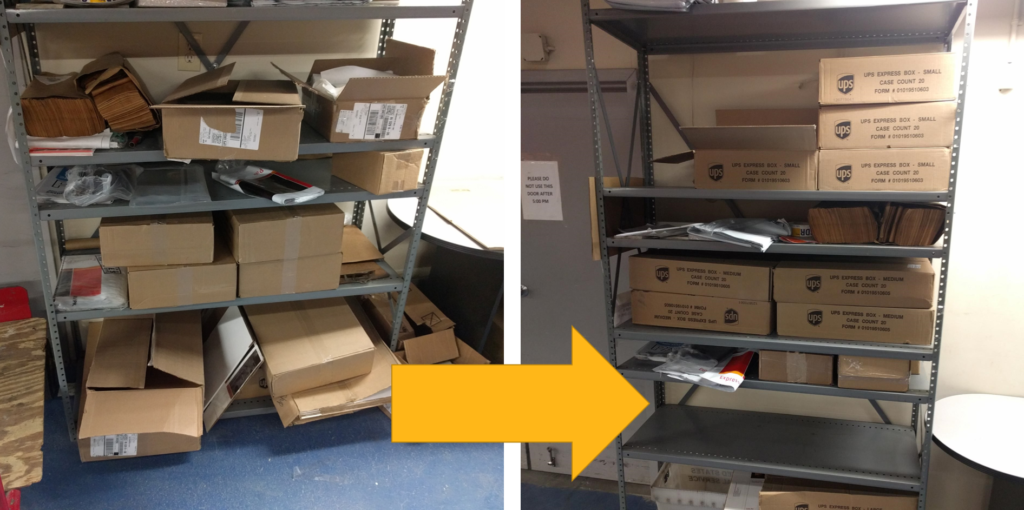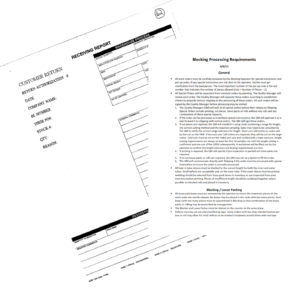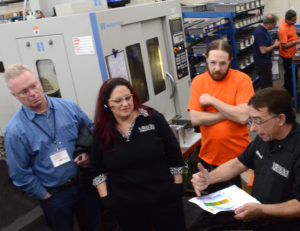There are a number of common challenges in the Shipping and Receiving areas of a manufacturing company. Often there is not a lot of focus by manufacturers to improve those areas, which are actually critical to the companies’ operations and to high level customer satisfaction.
I led a shipping and receiving department for an automotive manufacturer before joining Polaris MEP. And, together with my fellow project managers, we’ve worked with hundreds of Rhode Island’s smaller and medium-sized manufacturing companies on continuous improvement programs.
In this post, we take a look at 7 problems we commonly see in receiving and shipping, the issues they cause, and a proven solution to consider.
The Challenges
1. Receiving Errors (wrong part received, wrong quantities, no transaction done)
Manufacturers often are struggling with receiving errors, when we begin working with them. These include entering the wrong part or quantity received into the inventory system. This issue will cause inventory inaccuracies, potential unforeseen shortages for customer orders, customer late deliveries, and errors in the financial system.

Another issue arises when a received part is moved and put away in the wrong location. This will cause extra labor time to find the parts. And, if the parts are not found, there is a potential for a shortage of material for a customer order and the ordering of additional un-needed inventory.
In addition, it could be the part is brought into the building but not officially received. Again, this will cause inventory inaccuracies, and Accounts Payable issues with the supplier. It also can increase costs as unneeded stock could be ordered.
2. Shipping Errors (wrong products, quantities, wrong customer, no transaction done)
Common challenges in the shipping department include errors such as sending the wrong part or quantity to the customer. This results in a very upset customer. This could also cause shortages to other customers who needed the part which was shipped in error.
Shipping errors also cause billing issues, as corrections (credit memos) will be needed. This may cause the customer to go look for other suppliers.
Another error is when parts are shipped without the shipping transaction done in the system. Again, this results in billing issues and potential loss of the inventory.
3. Missing or Unclear Procedures

Documented procedures make it easier to prevent and/or resolve errors in a manufacturing facility’s shipping/receiving department.
Does everyone in the department know how to work in the same way? Without documented procedures, you’ll get inconsistent results. This makes it hard to find the root cause of issues that arise and makes it harder to resolve them.
4. Not Following Proper Procedures
Wasted time, wasted trust between employees and departments, delays in customer deliveries … There are numerous issues that come about when manufacturing workers in shipping or receiving don’t follow the proper procedures.
5. Lack of Visual Tools
Where does ___ belong? Why can’t I find ___? Where is this item in the shipping or receiving process?
Visual controls such as shipping and receiving lanes reduce errors. Unfortunately, many manufacturers don’t implement these tools. Workers and customers pay the price.
6. Lack of Cross-Training
When a receiving team member is out, and no one from the shipping team has enough knowledge to know how to fill in, the entire company – and its clients – pay the price. Without cross-training, transactions may not be completed on time. There can be delays in production as parts don’t get where they need to be and/or, missed shipments to customers.
7. No Part Location System
When a Rhode Island manufacturing company does not have a part location system, people do not know where to put or remove parts from the stockroom. This causes major issues with the production process and will cause manufacturing delays and customer delivery issues. Also, additional unneeded inventory will be ordered to replace the missing inventory.
So, How Do Manufacturers Resolve These Shipping and Receiving Issues?

You can implement additional technology as a solution. But even with better technology if the employees do not use it according to the procedures, there will still be issues.
The proven solution is TRAINING.
- Have all workers in the shipping and receiving areas go through training such as a “kaizen” event or a series of workshops/courses.
- Everyone should know the importance of not making errors, and understand how errors affect the whole company.
- Go over all of the procedures and make sure they are understood by all.
- Cross-train some or all of your shipping and receiving workers. If it’s a very small team, cross-train a few employees from outside of the department.
- Train the entire team on 5S, a Lean Manufacturing tool that standardizes work practices and procedures.
- Train the team on following visual controls. (Obviously, first you need to create the visuals to reinforce and support effective workflows!)
There are a number of other steps that can be completed to resolve issues such as building in “error proofing” into the process. After training is done to prevent errors, a tracking system can then be put in place to detect mistakes so that corrective action can be taken if/when issues arise.
Our team has found TRAINING to be the one first and best step manufacturers can take to resolve challenges in shipping and receiving.
Want to talk through your unique situation? Contact me at tkennedy@polarismep.org or 401-270-8896, ext 410.
